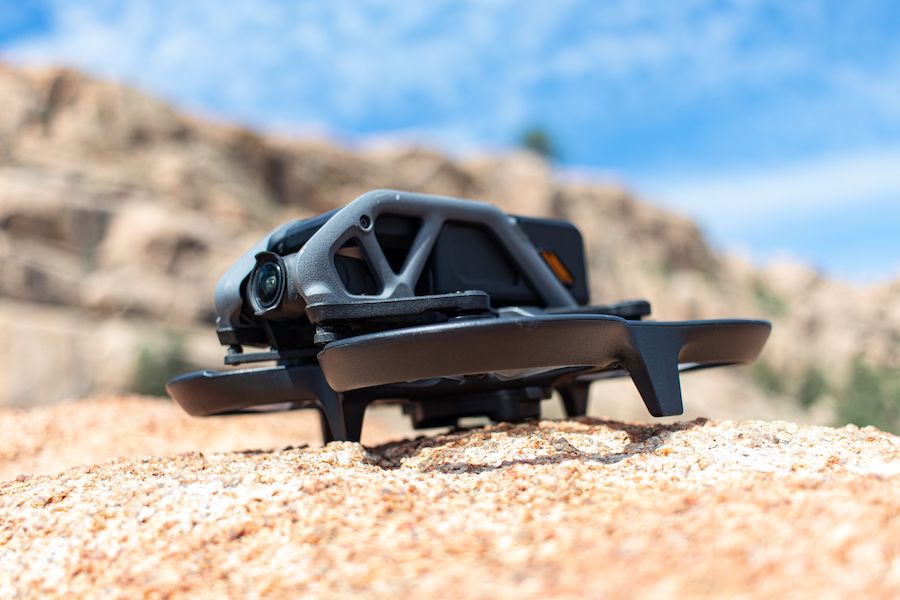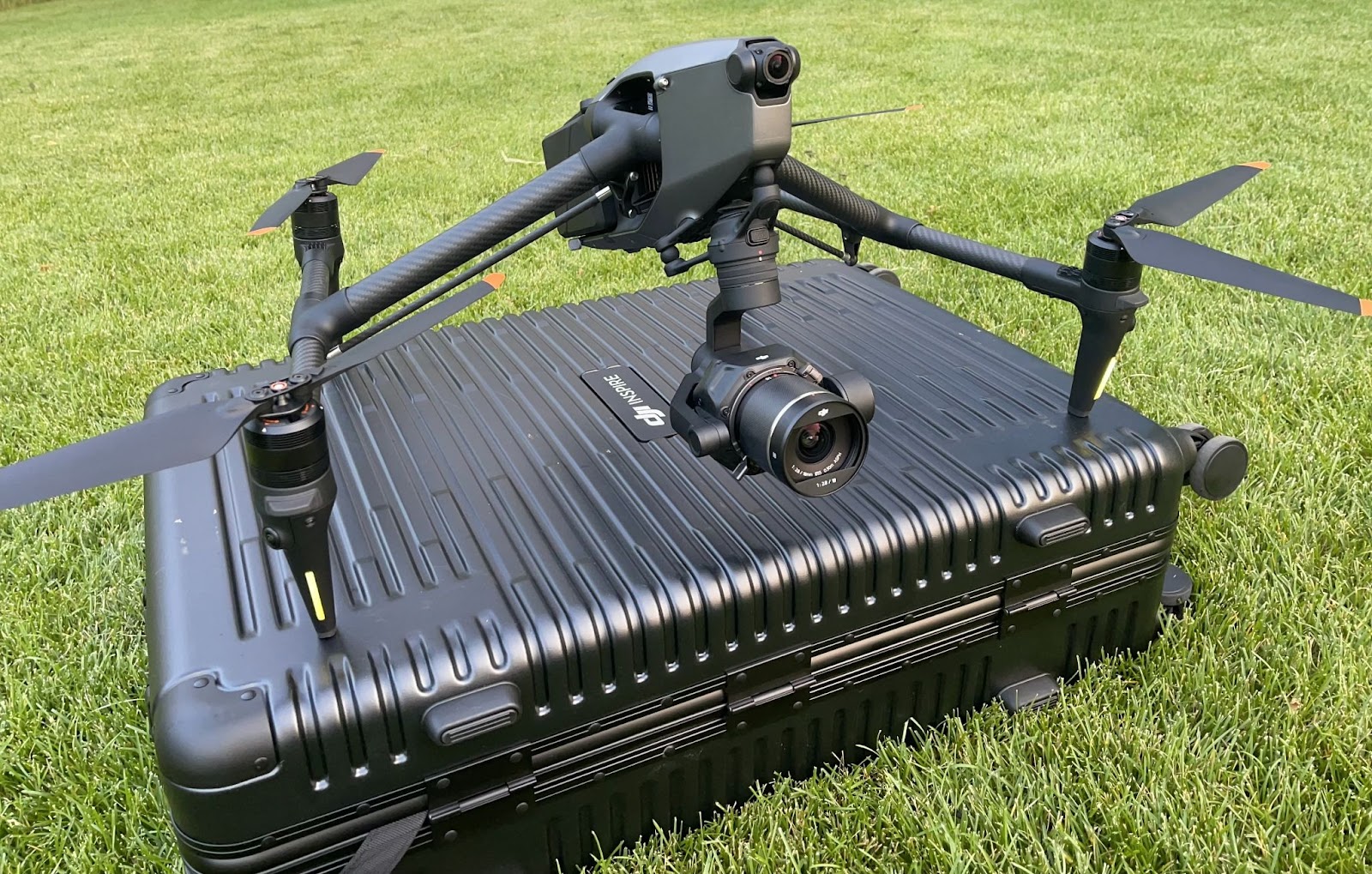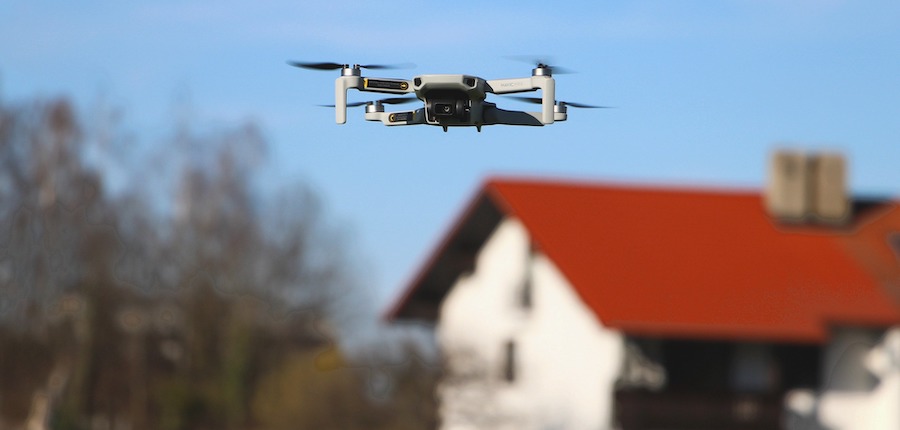DJI continues to release drones every few months and this time we get a new form factor: a cinewhoop. Cinewhoops have become a popular way to capture footage seamlessly from outdoors to indoors. Until today, cinewhoops took considerable skill to fly but DJI is making it much simpler to learn and master with the brand-new Avata.
The new DJI Avata essentially makes flying indoors a lot easier and safer with a full GPS and attitude-hold mode. Additionally, the combination of the motion controller and head tracking allows you to do things that were nearly impossible to do in the past!
Pricing and Combos
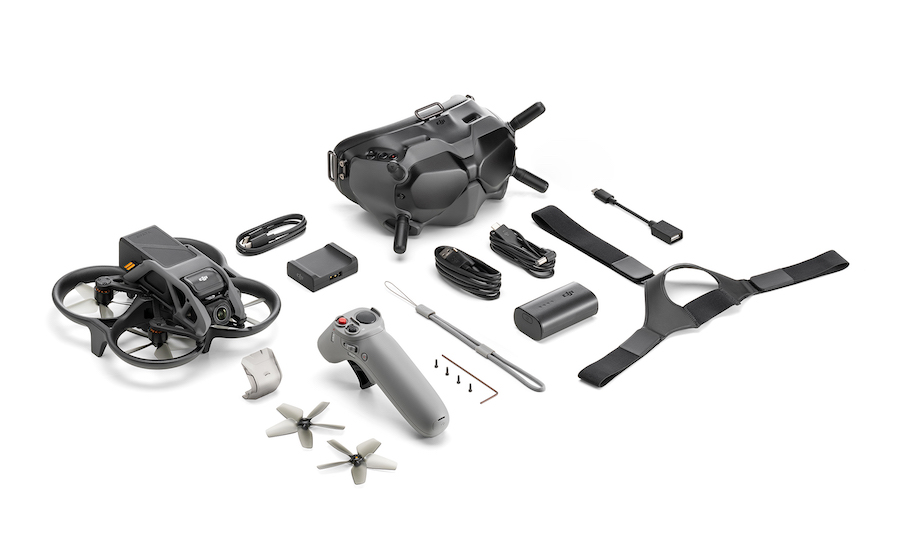
DJI is continuing the pricing strategy they started with the Mini 3 Pro with the new Avata drone. You can buy the drone without a controller or goggles. It will cost you $629, so if you already own the DJI FPV, that’s a pretty sweet deal!
You can also buy one of the combos: the Pro-View Combo gives you access to the new Vision Goggles (we’ll get to those in a second), the motion controller, and one battery for $1388. This is the most expensive combo. The Fly Smart Combo gets you the “old” FPV Goggles V2, a motion controller, and a battery for $1168.
Note that there is currently no combo available with the traditional FPV transmitter. You can buy it separately for $179.
If you need more flight time, the Fly More Kit gives you two more batteries and a charging hub for $279. That’s $20 less than the DJI FPV Fly More kit.
DJI is also making various parts available for repairs, such as the upper frame ($19), the propeller guard ($29), ND filters ($79), and propellers ($9).
Can it lift a GoPro?
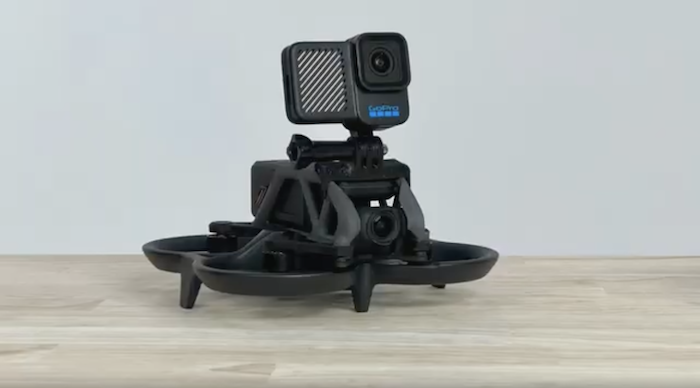
Let’s make this clear first. The Avata is not really “designed” to carry a GoPro. You will need to 3D print or buy an attachment (check out our friend OriginalDobo’s store for these parts and these parts) and make sure it doesn’t sit too close to the GPS unit that stands on the top of the gimbal assembly.
With that out of the way, yes it will lift a GoPro. It needs more throttle input, and it’s probably not a good idea to go full loop and roll, but it’s plenty capable! With a 3.38:1 thrust ratio, it’s almost as much as the DJI FPV’s 3.54:1 ratio. What this means is that once it lifts its own weight of 411 grams, the Avata is capable of carrying another 980 grams (at full throttle).
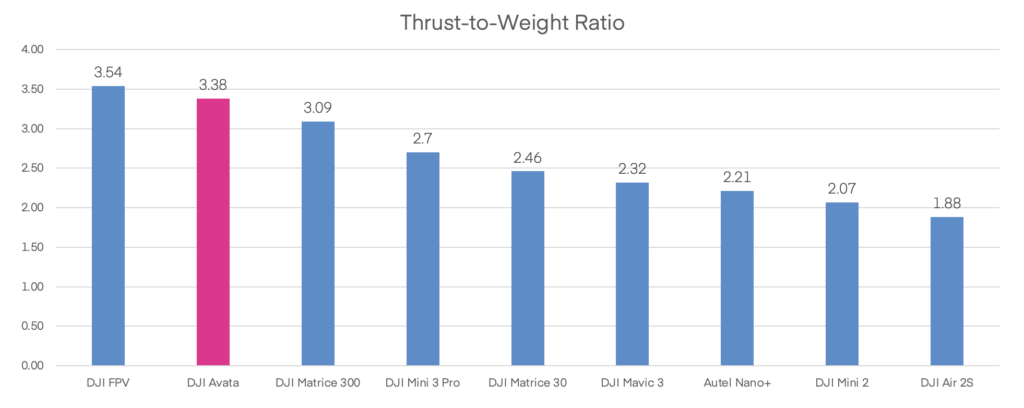
Is it worth it, you might ask? We found the new 1/1.7″ CMOS sensor to be as capable if not more than the GoPro, especially when it comes to image stabilization. Check out for yourself with this video.
5x more flight time
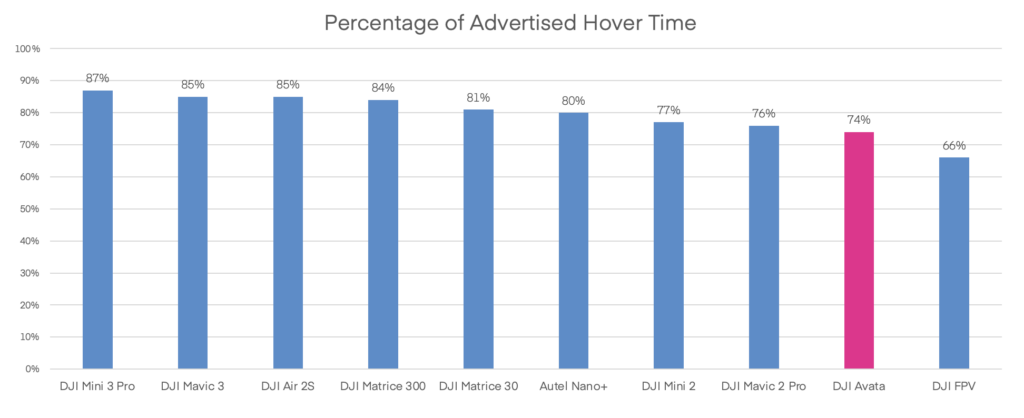
We were pretty impressed with the 19-minute advertised flight time. 19 minutes? Are you crazy? My Mavic 3 can fly for 45 minutes. That’s impressive!
True that… but we’re comparing the Avata to other Cinewhoop in the same category and that’s roughly 5 times longer than the 4-5 minutes you would typically get on a good day! Of course, this is the advertised time and we know that all the conditions have to line up perfectly to get 19 minutes. During our test, we managed 14:03 at an equivalent (density) altitude of 8200 feet. We started with 99% battery and forced landing happened at 8%. If you live at sea level or lower than us, you’ll probably get better results! But at 73% of the advertised flight time, it’s a pretty good performance, very much in line with other drones we tested in the past.
New Vision Goggles
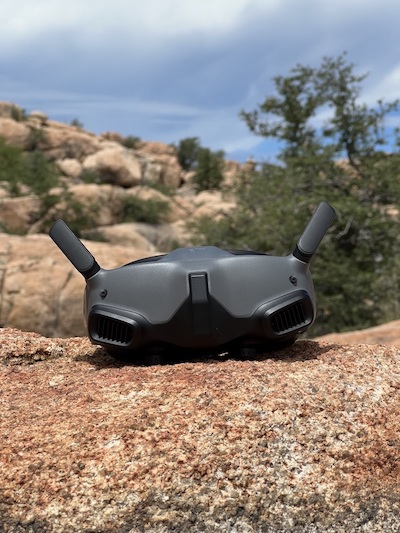
DJI also released a new set of goggles alongside the Avata. The new goggles are much lighter and less bulky than the previous ones.
We really appreciated the new OLED high-resolution screen, the simpler head strap design that doesn’t cover the top of the head, and the new adjustable diopters. Unlike the original DJI FPV goggles (which also work with the DJI Avata), you can not only change the spacing between diopters, but you can also change the focus point of each eye by rotating a small wheel located under the goggles. This means that even if you wear glasses, you will be able to see the image when wearing the goggles.
DJI also replaced the set of buttons on the top of the old goggles with a new touchpad that is much easier and intuitive to use. After using it for only a few days, we found ourselves looking for it when using the old goggles. One trick though, remember to do it two-finger tap to go back to the previous screen. Ask us how we know…
Two controllers, One drone
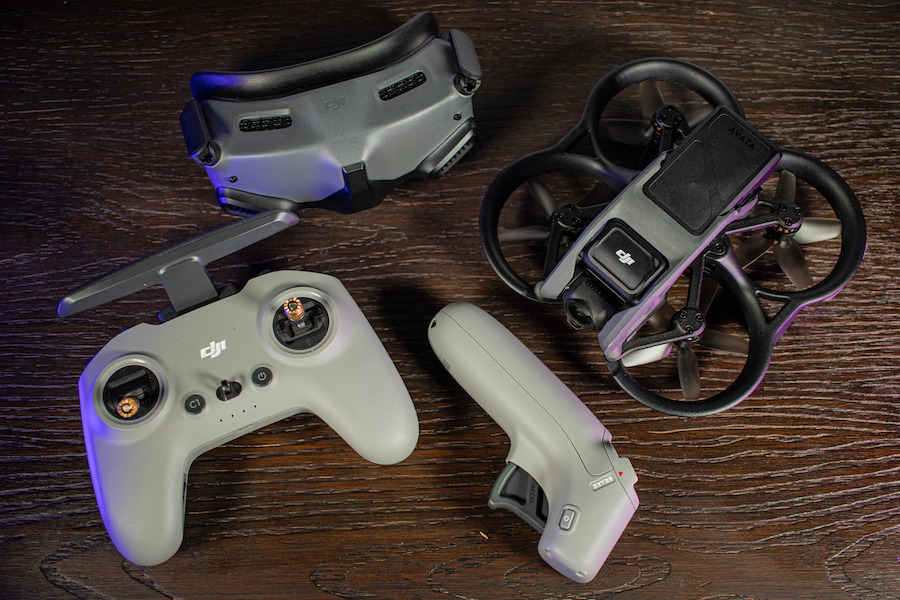
Just like with the DJI FPV, you can use two controllers with the Avata and the good news is they are the same controllers as the DJI FPV. As we mentioned before, the Motion Controller is the only one that comes with a bundled package. It will allow you to easily and quickly fly the drone even if you’ve never done that before. Our administrative assistant was able to fly the drone within minutes although she has no experience at all.
And the only downside is that the Motion Controller does not allow you to fly the drone in full manual mode. For that, you will need to get the FPV controller separately. Even then, you still have to change a few things in the settings in order to get the drone to fly in full Manual mode.
Distortion Correction
Action cams are great but they tend to distort the image much more than traditional camera lenses. The DJI Avata offers two levels of distortion correction in addition to its UltraWide field of view. When using the “Wide” mode, the image becomes more natural, but the “Normal” correction truly makes vertical and horizontal objects look true to life, all while minimizing the image crop.
Head tracking
The new feature that was introduced to the DJI Avata is called head tracking. The feature is only available when you are using the motion controller but it allows the pilot to turn their head while flying in order to look in a specific direction. This is very similar to virtual reality and augmented reality and will be very useful for pilots looking to use this drawn for inspection purposes. With this mode, you will have the ability to fly sideways backward and even in an orbit while using the motion controller. This is not something that is possible with the DJI FPV.
RockSteady Stabilization, better than Hypersmooth?
RockSteady was introduced with DJI’s action camera, then later on the DJI FPV, and we find it again in the DJI Avata. Is it better than the HyperSmooth stabilization of the GoPros? It’s actually very difficult to tell. We found that Rocksteady was able to correct unwanted roll better than HyperSmooth.
One advantage to GoPro is that it offers three levels of HyperSmooth stabilization while DJI only offers one level of rocksteady. We found the highest level of HyperSmooth not only crops the image a lot but it also reduces image quality significantly.
Video Performance
We were very impressed with the image performance of this drone. Whether you are flying indoors or outdoors, you will find that the Avata performs really well for such a small drone. Take a look at this video for some comparative footage with the GoPro Hero 10 Bones.
https://youtu.be/csWN1O8iXhY
Is it better than the DJI FPV?
Final Thoughts
For a first attempt at a Cinewhoop, DJI was able to nail it with the Avata. Image quality with great stabilization, GPS, lightweight goggles with strong signal, the option to use two controllers, and even head tracking. We are certain that the Avata will be used in more way than we can think of right now.
